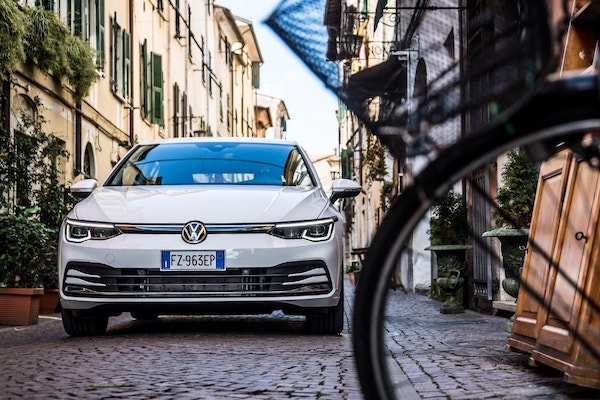
Italy Full Year 2023: Market up 19%, Volkswagen topples Fiat in December
Volkswagen was the #1 brand in Italy in December.
Consult 95 years of Italian Historical Data here.
The Italian new car market rallies back up 19% or 250,000 sales year-on-year in 2023 to 1,566,448 units. This is however 350,000 units (-18.3%) below pre-pandemic 2019. Private sales trail the market at +13.4% to 882,918 units and 55.5% share vs. 58.3% in 2022, self registrations soar 42.8% to 161,658 and 10.2% share vs. 8.5% last year, long term rentals gain 24.2% to 385,752 and 24.3% share vs. 23.3%, short term rentals are up 23.2% to 64,445 and 4% share vs. 3.9% and company sales climb 19% to 95,837 and 6%, unchanged on 2022. Looking at sales by propulsion, petrol actually beats the market at +22.6% to 449,630 and 28.3% share vs. 27.5% in 2022, diesel is up 6.2% to 282,840 and 17.8% share vs. 19.9% and LPG is up 21.1% to 143,889 and 9% vs. 8.9%. As for green options, HEVs are up 26.5% to 575,480 and 36.2% share vs. 34.1% last year, including 158,328 full hybrids (+30.5%) and 417,152 mild hybrids (+25%). PHEVs edge up 3.3% to 70,188 and 4.4% share vs. 5.1% and BEVs soar 34.5% to 66,679 but remain at a very low 4.2% share vs. 3.7% in 2022.
The Fiat Panda is the best-selling vehicle in Italy for the 12th year in a row.
In the brands ranking, Fiat (-2.5%) goes against the sturdy market to fall to its lowest ever annual share at 11.1% vs. 13.6% last year which was also its lowest ever at the time. Its annual volume slides down under 175,000 for the first time in over 65 years. Volkswagen (+17.1%) ranks #2 again with 7.8% of the market. But the biggest event of the year brand-wise happened in December: Volkswagen (+20.6%) toppled Fiat (-16%) to become Italy’s favourite marque for the first time since records began in 1928. At 9.7%, VW managed its best market share since December 2020 (10.5%) whereas Fiat fell to 9.5% which is its 2nd lowest ever below last June (9.4%). Toyota (+7.1%) stays in third place but sees its share thaw to 6.3%. Dacia (+27%) gains two spots and breaks its annual ranking record at #4. It remains above sister brand Renault (+35.5%) for the 2nd time in a row and ever. Ford (+10.3%) drops one rank to #5 with Jeep (+38.8%), BMW (+27.6%) and Audi (+20.2%) also posting solid gains in the remainder of the Top 10. MG Is up 310.6% to #20 and Tesla up 196.8% to #26.
The Lancia Ypsilon ranks #3 in 2023.
The Fiat Panda (-2.6%) sees its share drop to 6.6% but scores a 12th consecutive annual pole position. The Dacia Sandero (+42.7%) surges ahead and gains two spots on last year to end 2023 at a record 2nd place overall. The Lancia Ypsilon (+9.6%) is relegated to third place while the Toyota Yaris Cross (+34.4%) advances five ranks to a record 4th place. The Fiat 500 (-3%) drops two spots to #5, distancing the VW T-Roc (+31.6%) up 7 ranks to #6. The Renault Captur (+22.3%) also has a sturdy year, up four spots to #7, a new ranking record for the nameplate. The Dacia Duster (+19.4%) matches the market to return inside the Top 10 at #10. The Peugeot 2008 (+44.1%), Renault Clio (+41.4%) and Fiat 500X (+25.4%) also shine below. The Jeep Avenger is the only new launch in the Top 50, landing directly at #18 and hitting a fantastic 4th place in both October and November. Another success story is the MG ZS up to #22 this year and even ranking at a record #7 in December.
Previous year: Italy 2022: Fiat falls to lowest ever share, Toyota, Dacia break records, market down -9.7%
Two years ago: Italy 2021: Fiat Panda and 500 dominate in market up 5.5%
Full December Top 47 All brands and Top 50 models below.
Full Year 2023 Top 47 All brands and Top 50 models vs. Full Year 2022 data below.

